bonsai, ginseng ficus
Ginseng Ficus: One of Many Bonsai to Have in the Home!

Tokyo Terry
Posted on April 29, 2025
Share:
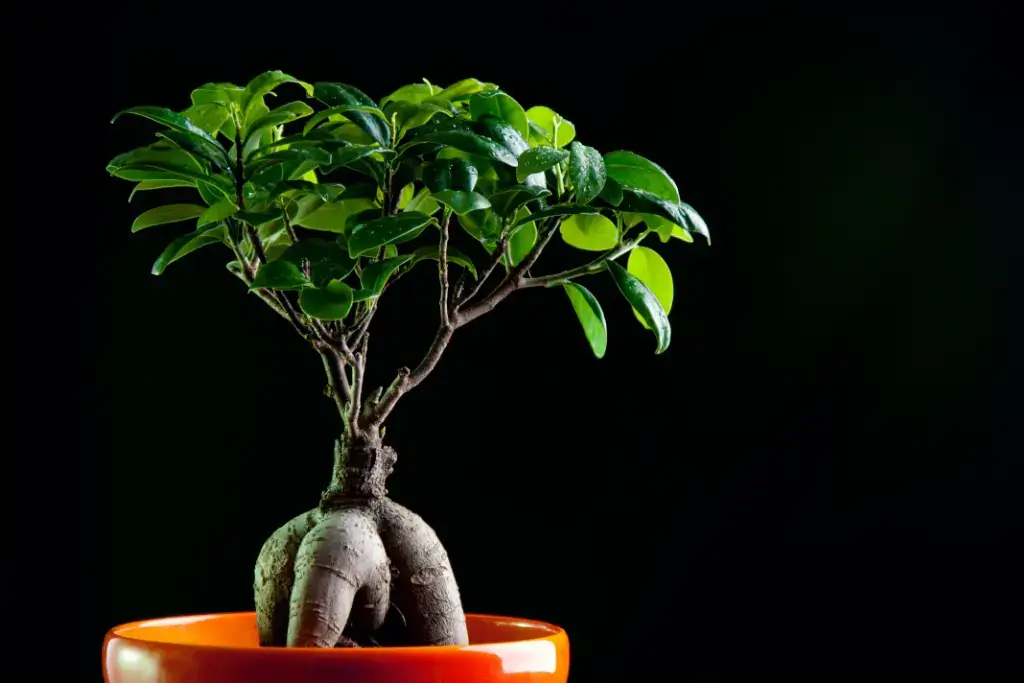
Japan is the birthplace of numerous art forms. But perhaps none have combined nature with patience, and captivated the world’s heart as much as bonsai. Growing miniature trees in shallow pots requires knowledge of plant species, skill, and patience. It traces its roots to ancient China, but found a distinct identity in Japan. Trees like ginseng ficus have become so popular that they are sold in supermarkets and kept in homes across the globe.
During the Heian period (794–1185), it emerged as a refined craft among Japanese nobles. Its appeal lies in its simplicity and the quiet skill it demands. For those drawn to Japan’s quieter traditional arts, such as tea ceremonies or calligraphy, bonsai offers a living connection. But what makes a tree ideal for this art? Today, we’ll investigate which types are suited indoors and learn about their history.
Ginseng Ficus (Gajumaru)
The ginseng ficus plant, known as gajumaru in Japan, is ever present in the bonsai scene. Its bulbous roots resemble ginseng, giving the tree its name. This feature allows it to be shaped into unique and striking forms. It is a perfect beginner’s choice for a home bonsai as it thrives indoors with minimal care. Its thick, glossy leaves and gnarled roots adapt well to the shallow pots used in the art form. Also, it tolerates low humidity, a plus in Japan’s seasonally dry weather. This quality has made it a symbol of resilience.
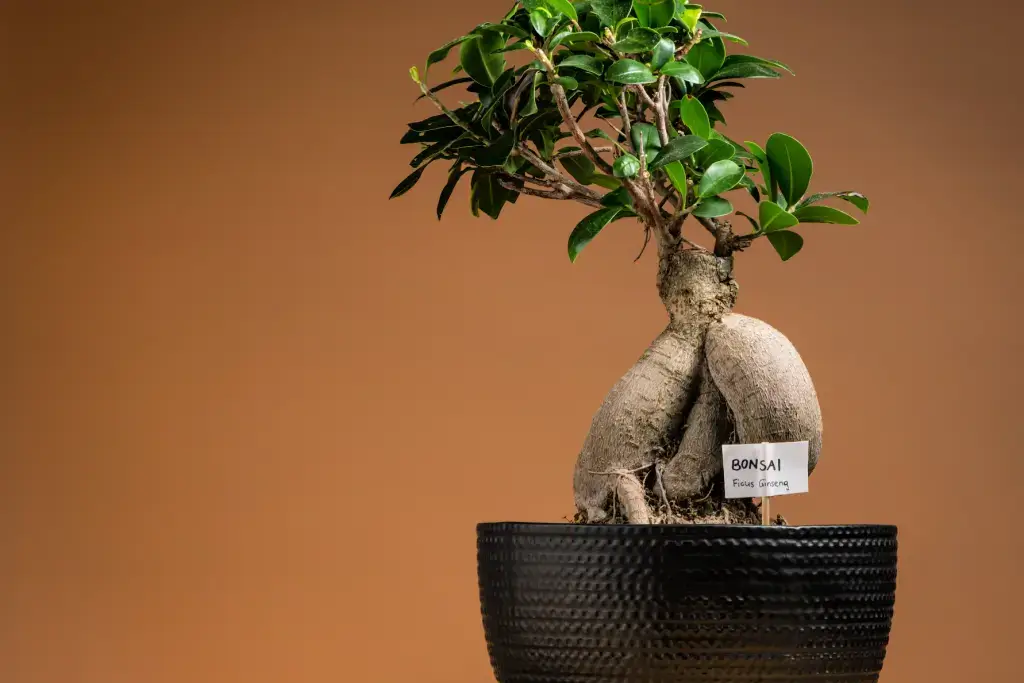
This tropical species grows wild in the subtropical Japanese prefecture of Okinawa, which is especially lush in spring. Ginseng ficus is often linked to Okinawan folklore because of the belief that it houses spirits called kijimuna. These mischievous, childlike beings are said to play tricks like stealing paper lanterns or lying on people’s chests while they sleep. This connection to cultural myth makes it a beloved choice.
Japanese Maple (Momiji)
The name momiji translates as “leaves changing color” or “red leaves”. The fiery hues of this seasonal icon capture autumn’s magic even on a tiny scale. Its delicate leaves shift from green to red, a sight often celebrated in haiku. Japanese maples (Acer palmatum) have graced gardens since the Nara period (710–794).
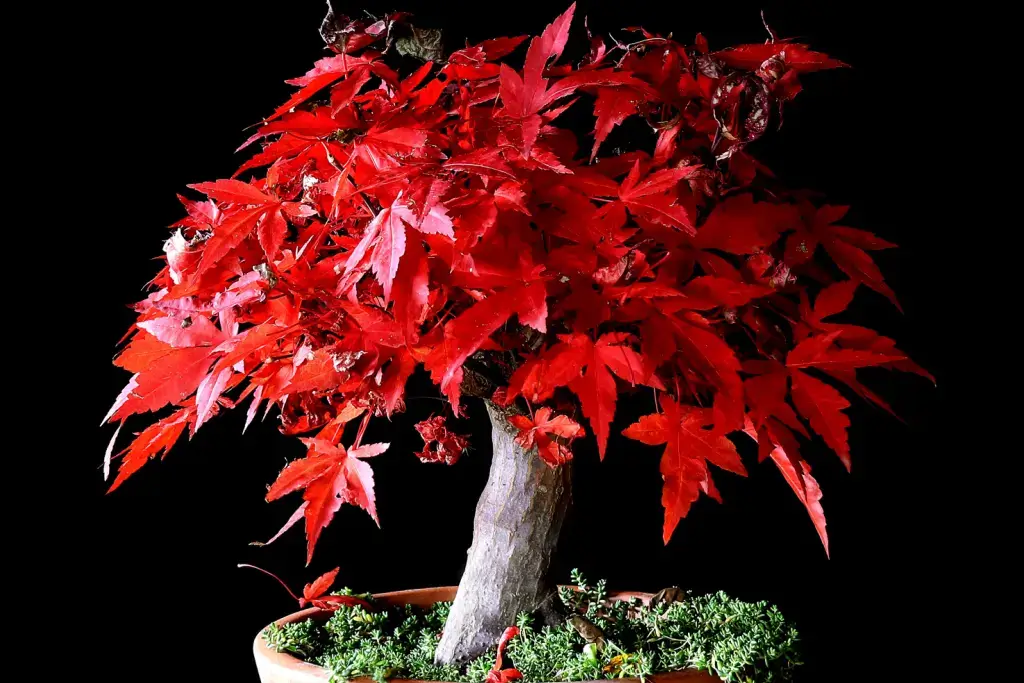
The naturally small leaves of Japanese maples suit the art’s smaller scale. They respond well to pruning by producing beautifully shaped, graceful branches. Indoors, momoji require tending to thrive. Specimens need bright, but indirect light, such as in a sunlit tatami room. Kyoto’s nurseries and temple gardens have perfected their care. The wabi-sabi beauty of their techniques can be fully appreciated in November.
Are you looking for amazing snacks made by traditional makers from Japan? Check out Sakuraco! Sakuraco delivers traditional Japanese snacks, teas, and sweets from local Japanese makers directly to your door so you can enjoy the latest treats directly from Japan!
Japanese Black Pine (Kuromatsu)
This Japanese tree has been a bonsai classic since the Edo period (1603–1867). Its scientific name is Pinus thunbergiim. It is known as kuromatsu (black pine) in Japan, referring to its dark, sturdy needles. Despite high winds, salty air, and an often rocky landscape, it grows wild along Japan’s coasts. These poor conditions often give it a misshapen, windswept appearance. It is loved for its rugged beauty and is often used to represent strength in Japanese poetry and art.
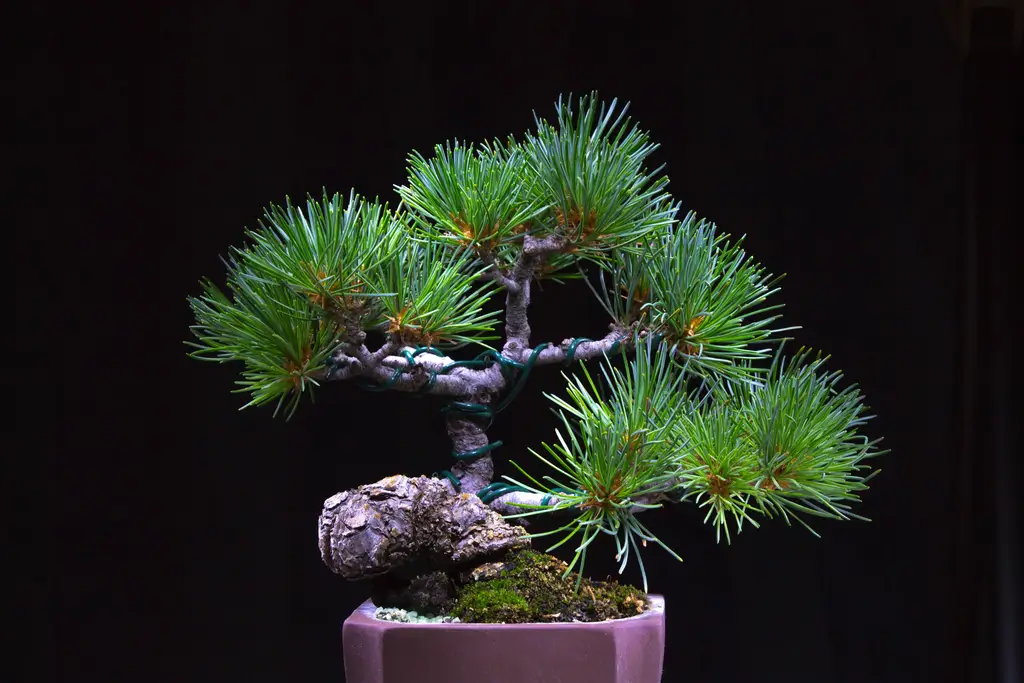
Kuromatsu needs care when kept indoors, so it is not ideal for beginners. However, small specimens can still adapt well to being kept indoors if they receive bright light. Japan’s bonsai masters strongly favor this species. Its trunk can be twisted and shaped over decades. The needles of the black pine also shrink with continuous pruning, which fits well with the miniature aesthetic. Saitama’s Omiya Bonsai Village, just north of Tokyo, has stunning examples on display.
Japanese White Pine (Goyomatsu)
The Japanese white pine (Pinus parviflora) symbolizes longevity in the Shinto religion. Its Japanese name, goyomatsu, means “five-needle pine,” which hints at its foliage. During the Muromachi period (1336–1573), monks prized its soft, clustered needles for their Zen gardens. Today, Japan’s masters still cultivate it with passion and precision.
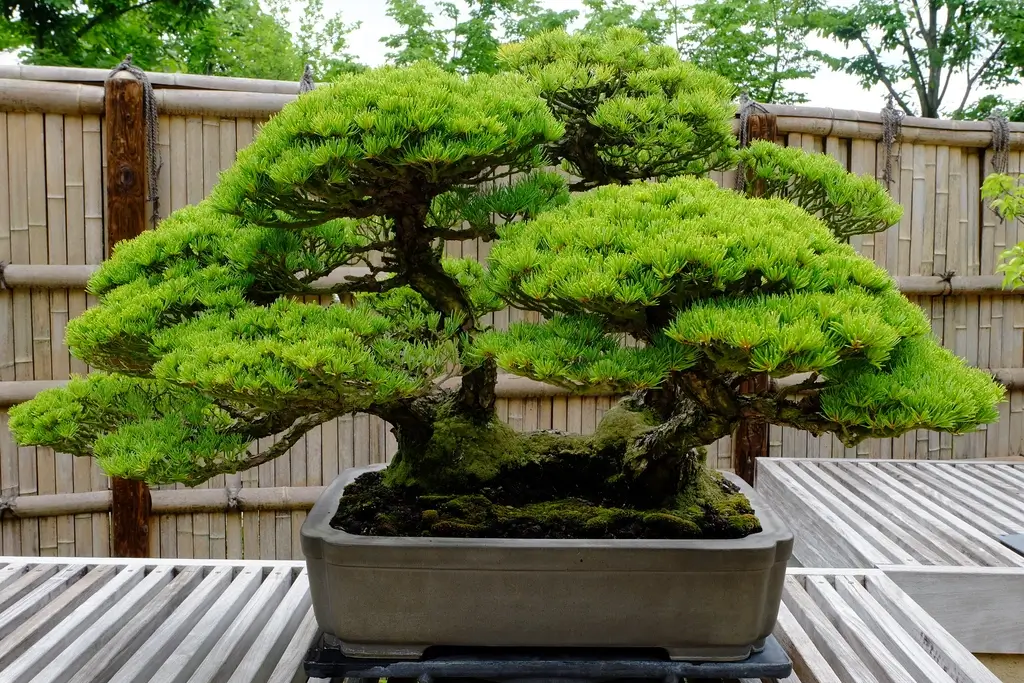
Goyomatsu is most at home in Japan’s mountainous regions, but it can have an elegant appearance as a houseplant with some effort. A south-facing window is ideal, as it craves sunlight. And its short, blue-green needles match the tree’s miniature form. Takamatsu’s Kinashi Bonsai Village in Kagawa Prefecture excels at raising these pines. Nurseries dot the area near Kinashi Station.
Fukien Tea (Mushirogusa)
The Fukien tea tree (Carmona retusa) gets its name from the southern China province of Fukien (or Fujian), where it is from. It entered Japan via trade in the Edo period (1603–1867), and has adapted quite successfully to its new country since. In Japan, it is known as mushirogusa. Subtropical regions like Fukuoka Prefecture in northern Kyushu mirror those of its homeland.
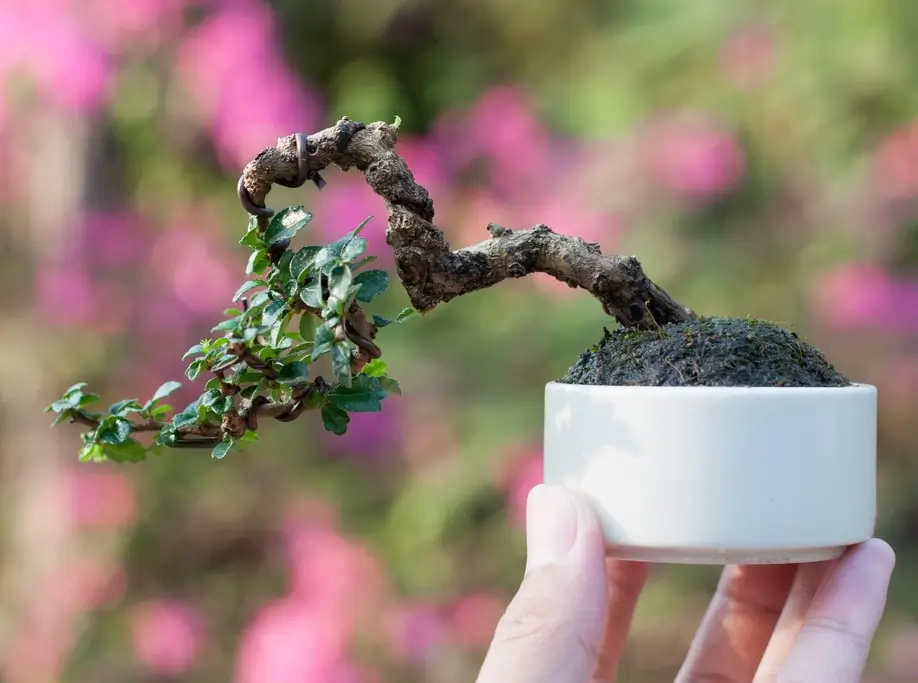
Mushirogusa brings a floral twist to bonsai. Its small leaves and tiny white flowers that bloom year-round make it attractive to hobbyists. It also adapts well to pots, sprouting new shoots after pruning. It is a good match for amateurs, as it excels indoors, especially in a warm, cozy room.
Why is bonsai important in Japan?
Bonsai is important in Japan because it allows people to practice a traditional art form at home. Unlike many traditional Japanese art forms, it does not require expensive gear or travel to a specific place. It is accessible to amateurs who want to admire natural beauty or casually observe the changing seasons indoors.
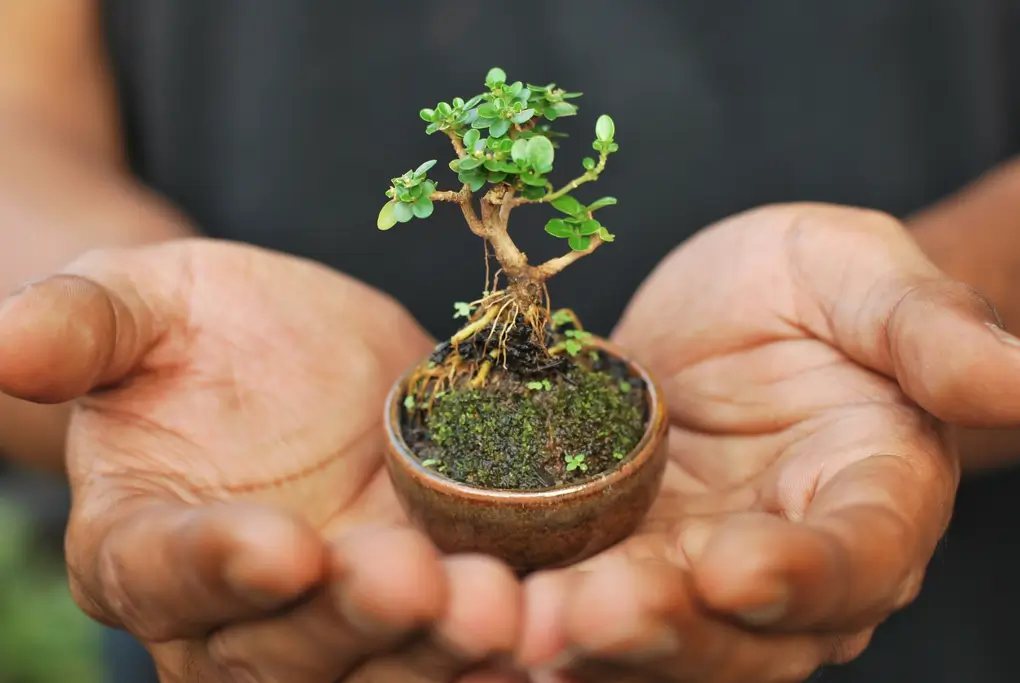
But bonsai can be enjoyed on deeper levels as well. These miniature trees can remind us of nature’s ruggedness and resilience. They can also be a form of inspiration and meditation, just as they were for artists in the past. This living art can offer calm and focus amidst the modern rush. Have you ever tended any of the trees mentioned above? Do you have any suggestions for other suitable home-grown species? Please share your experiences or tips in the comments below!
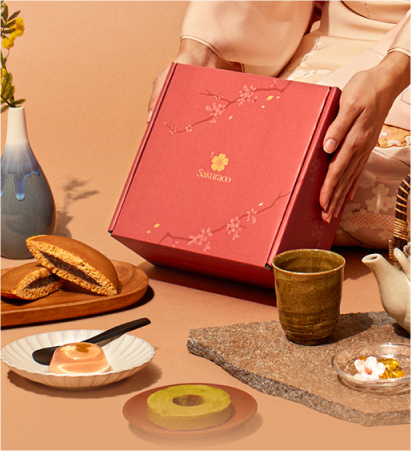
Discover authentic flavors with Sakuraco
Get Sakuraco 

Discover authentic flavors with Sakuraco
Get Sakuraco 
Related Articles
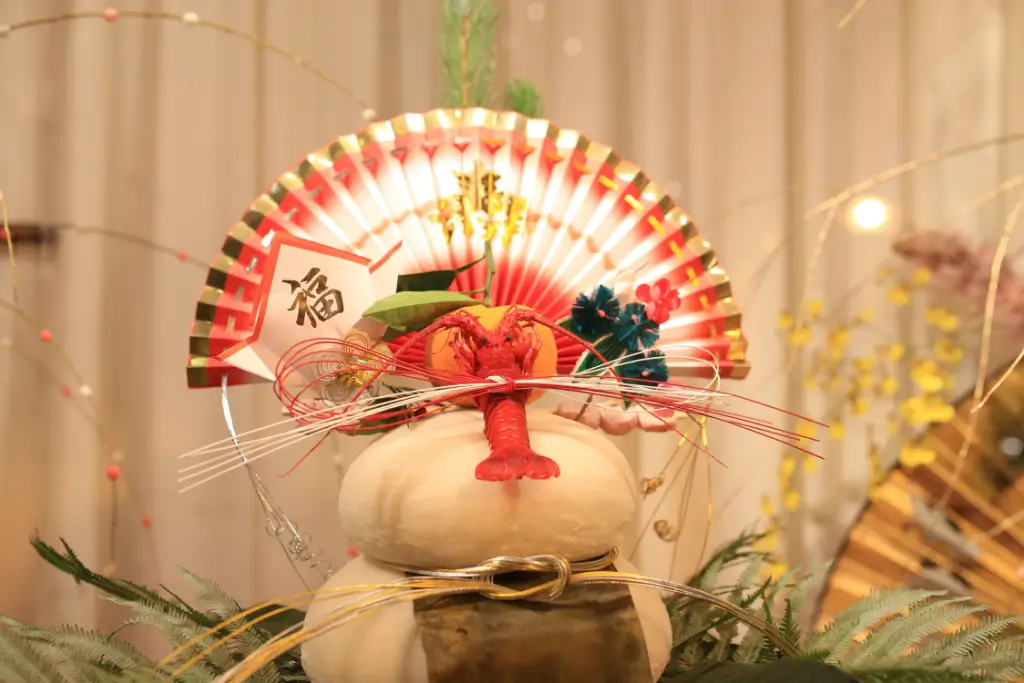
Toshigami and the New Year: How Shinto Welcomes a Sacred Visitor
In the Shinto tradition, Toshigami is the deity who arrives at the end of every year and remains through the New Year to bring blessings, a bountiful harvest, and good fortune. People in Japan honor Toshigami at the turn of the year with rituals, decorations, and special foods.
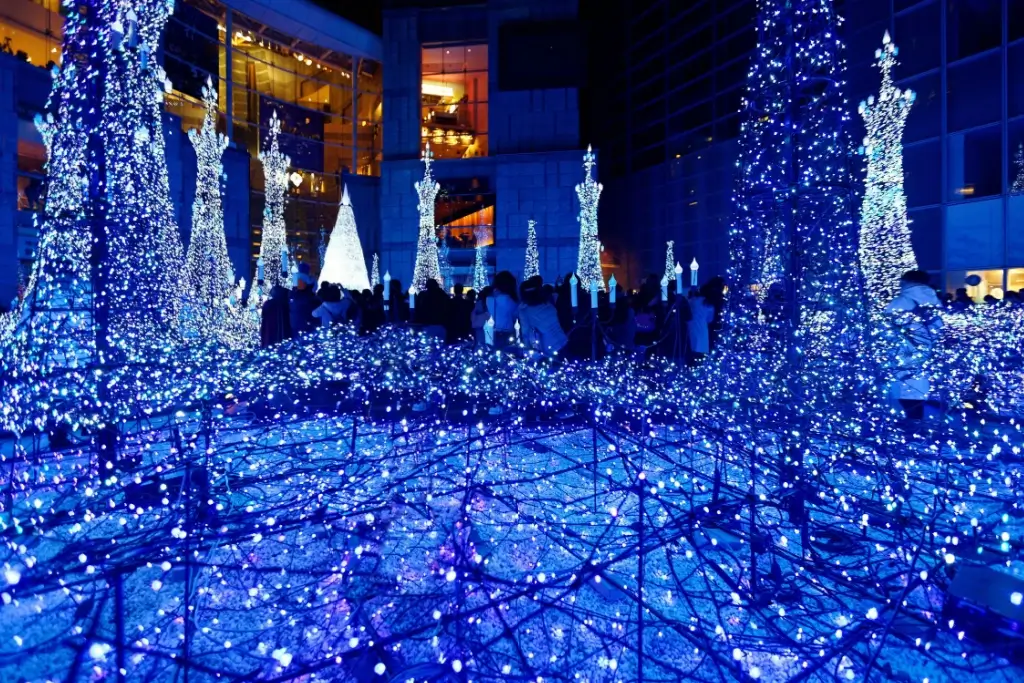
Japan in Winter: Why Are Illuminations Important?
Winter illuminations have become a tradition in Japan at the start of every Christmas season. Their sparkling brilliance chases away the cold of Japan in winter and encourages people to enjoy festive year-end activities. Let’s explore the origins and the amazing spots of winter illuminations in this beautiful country!

Behind the Camera with Rachel and Jun: Stories from Everyday Life in Japan
We had a lovely chat with Rachel and Jun about their story, from their early beginnings to how their videos continue to inspire people around the world. We’ve gathered and crafted their reflections into this special feature, so you can experience their story in a way that feels just like their videos: warm, genuine, and…
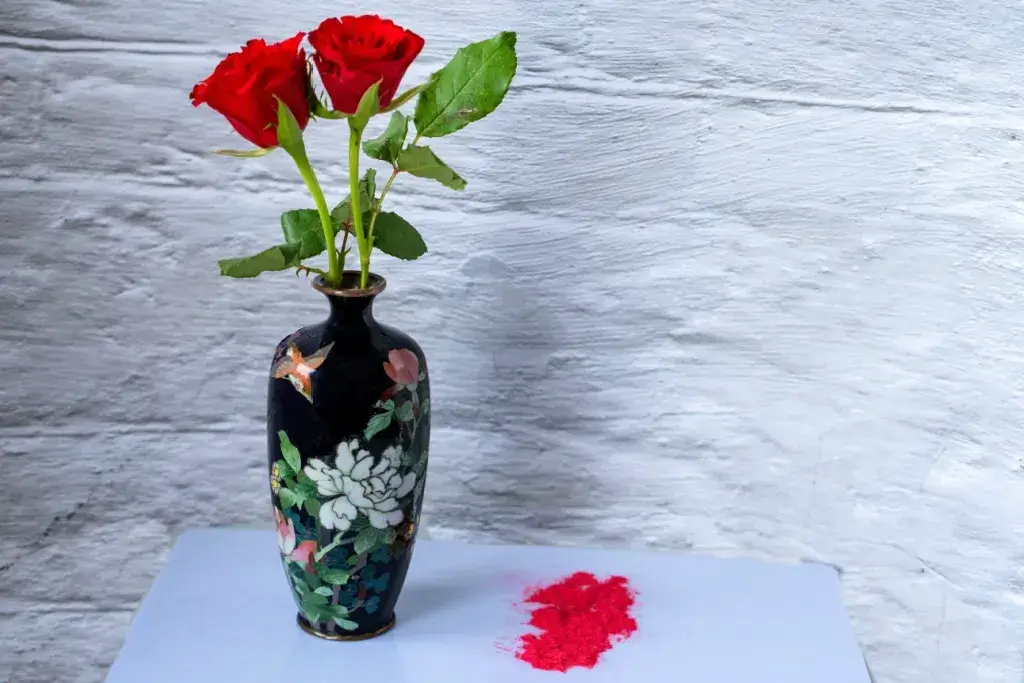
Japanese Ceramics: The Alluring Wares of Shippo Yaki
Imagine holding a small dish that glows as if sunlight is trapped inside it. This perfect example of Japanese ceramics resembles glass, with its colors deep and luminous, outlined with threads of silver. That’s the magic of shippo yaki.



